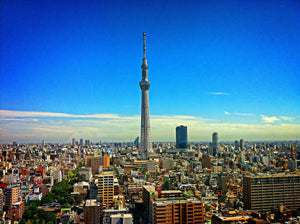Tokyo is the undisputed capital of Japan. The city, where history and traditions from the Edo period are fused with the latest trends, is full of excitement and stimulation that will keep you coming back for more. In this article, let’s see some of the classic spots that you cannot miss when sightseeing in Tokyo.
History of tokyo
It was Ieyasu Tokugawa who laid the foundation for Tokyo, the capital of Japan, as it is known today. Ieyasu Tokugawa entered Edo (present-day Tokyo) on the orders of Hideyoshi Toyotomi in 1590. At that time, Edo was an undeveloped area with only a few fishing villages. Ieyasu took up residence in the small Edo Castle and began to expand the castle and develop the castle town. In 1603, Ieyasu was appointed as the Seii Taishogun (Conqueror General) and established the Edo shogunate, bringing about a peaceful era for 260 years.
However, in 1867, the 15th shogun, Yoshinobu Tokugawa, handed over power to the Imperial Court, bringing an end to the Edo shogunate and ushering in the new era of Meiji. In 1868, Edo was renamed Tokyo and the "Tokyo Prefecture" was born. During the early to mid 20th century, two major disasters occurred: the Great Kanto Earthquake of 1923 and World War II. Tokyo was devastated by two major disasters, but each time the city was revived and rebuilt.
In 1943, Tokyo Prefecture and Tokyo City were merged and abolished to form the new Tokyo Metropolis. Since then, Tokyo has shown remarkable development as the capital of Japan. Today, Tokyo is the largest metropolitan area in the world with a population of about 14 million.
Recommended sightseeing spots in Tokyo
Sensoji Temple
Asakusa is a downtown area full of the atmosphere of Edo. Asakusa's most famous tourist attraction is Senso-Ji Temple, which was built in 628 and is the oldest temple in Tokyo. The large red lantern of the Kaminarimon Gate (Thunder gate, or officially Fujin Raijin Gate), the entrance to Sensoji Temple, is so famous that it has become a symbol of Asakusa. The Nakamise Street, which connects the main hall of Sensoji Temple and Kaminarimon, is lined with stores selling gourmet food, souvenirs, and handicrafts.

Meiji Shrine
The Meiji Shrine was built in 1920 to enshrine Emperor Meiji and Empress Shoken. There is a man-made forest of about 700,000 square meters, planted with 100,000 trees donated from all over Japan for the construction of the shrine. It is widely known as an oasis in the metropolis and as one of the most spiritual spots in Tokyo.
Tokyo Sky Tree
The Tokyo Sky Tree was built in 2012 as a new landmark for Tokyo. At 634 meters in length, it is the tallest existing radio tower in the world and the second tallest building in the world. You can enjoy a panoramic view of Tokyo from two observation decks: one at 350 meters and another at 450 meters above the ground. There are also high-rise restaurants and cafes on the observation deck where you can enjoy the spectacular view.
Ginza
The name "Ginza" comes from the silver coin mint established in the Edo period (1603-1868), and after Japan's first railroad line connecting Yokohama and Shimbashi was built in 1927, the area flourished as a high-end shopping district selling imported goods and new products. Today, the area is lined with long-established department stores and luxury brand stores and is loved by many tourists as a place where tradition meets the cutting edge.

Shinjuku Gyoen
Created in 1906 as an imperial garden, Shinjuku Gyoen is a modern Western garden representative of the Meiji era, combining a Japanese garden, a formal garden, and a landscape garden. With more than 10,000 trees of about 250 species, you can enjoy nature every season. Many historical buildings remain in the garden, such as the former Western-style residence and the former Goryotei Pavilion. Let's take a walk in nature and visit the valuable buildings.
Akihabara
Akihabara is one of the world's largest electronics towns. Akihabara has recently been attracting attention as a source of information on Japanese pop cultures such as manga, anime, figures, and cosplay. There are cafes with various concepts, such as maid cafes and idol cafes, making it a world-famous mecca for otaku culture.
Tokyo, with its many faces, from a city where you can enjoy the downtown atmosphere to the latest spots, has many attractive tourist spots and attracts many tourists from Japan and abroad. You can enjoy the unique charms of Tokyo that you cannot experience in other tourist destinations.

